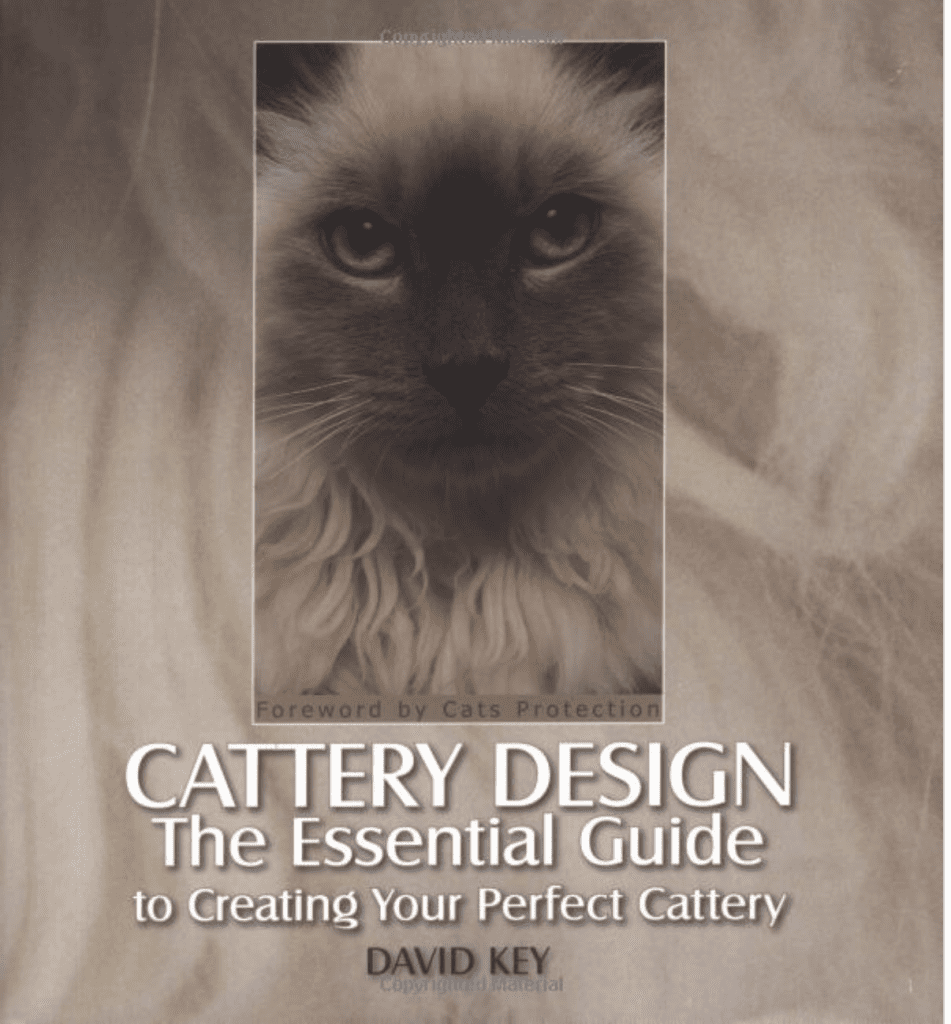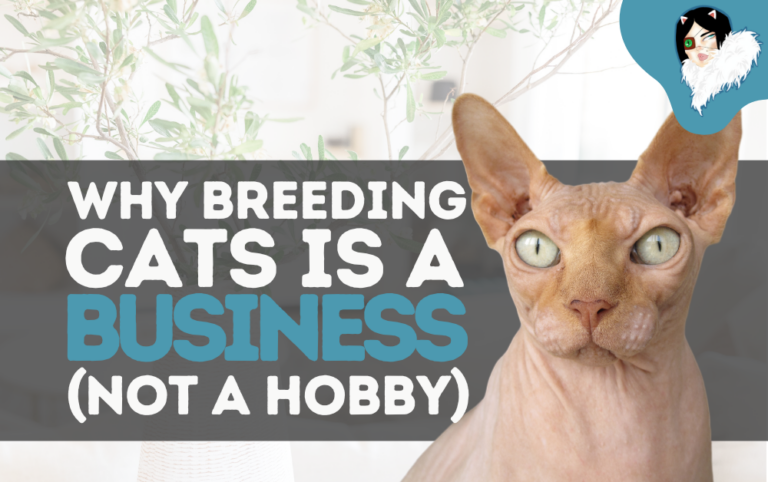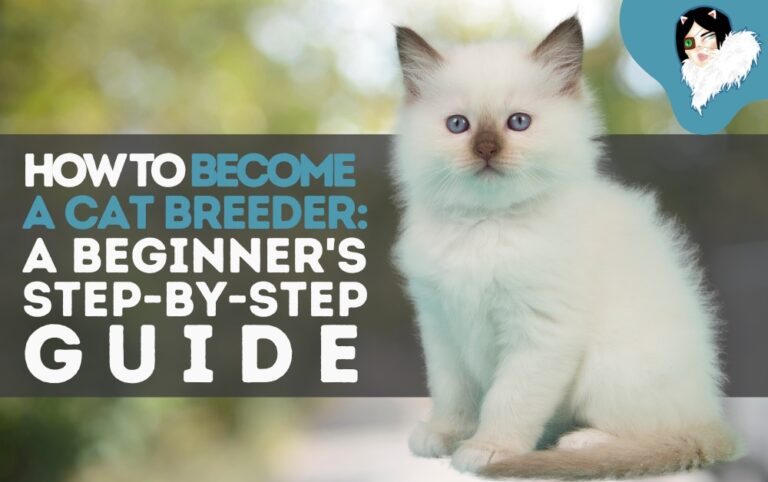How to Design a Cattery
Are you in the early stages of building your cattery and looking for cattery design ideas? It’s easy to get overwhelmed by this. Once you understand the basics about the space you’ll need to have your cattery running smooth you’ll be more comfortable with the thought.
This Cat Breeder Sensei Says Podcast episode will break down the exact number of spaces that is ideal for a new cattery. Once you have a listen, get some insight on setting up the nursery for your kittens.
Show Notes
Resource Mentioned in this Episode : Feline Husbandry by Niels Pedersen – this is an excellent reference guide that also includes great detail in regards to cattery design.
If you’re just starting out, you’ll most likely have 3 or 4 breeding cats in your tribe. Ideally, one male and three to four females is an ideal ratio, depending on the breed. This isn’t the only way to get started as a breeder, but something to keep in mind when you’re ready to start buying cats.
You can read more about this in the Course topic “How Many Cats Do You Need”. The course (Complete Guide to Breeding Pedigree Cats) is just one benefit of the Sensei Collective Membership. There are tons of other reasons to become a member.
Whether you’re using your personal home as a cattery space or implementing a separate cattery idea, the designated spaces will remain the same. You’ll be surprised at how creative you can get when it comes to utilizing your personal space.

Always Keep The Cats In Mind When Designing Your Cattery
The goal is always to maintain a healthy and stress-free environment for your cats. The cattery design plays a major role in that.
Study the behavior of cats and how they interact in a multi-cat environment. Listen to this episode where we discuss if intact male cats can share a space. The Feline Husbandry guide that is available in the shoe notes is a wonderful place to learn about multi-cat environment behavior and the effects it has. It can get tricky at times.
Depending on the personality of your Queens and Sire, you may need even more additional space than what’s mentioned in this podcast episode. Space is the biggest asset when you’re breeding Pedigree cats!
Setting Up a Nursery for Queens and Their Kittens

If you’ve got pregnant Queens in your cattery, it’s time to roll out the red carpet, honey—because these girls are about to become full-on moms, and they deserve nothing but the best. Setting up a nursery isn’t just about tossing a bed in the corner and calling it a day. It’s a strategic move that protects your kittens’ health, reduces stress for momma, and helps you stay organized and in control during those chaotic early weeks.
Having a dedicated space for your kittens is essential in your cattery design. Setting up your kitten room and nursery is fun and exciting!! Here are some tips to help you setup your space that will be safe and cozy for both the Queen and her kindle.
A dedicated nursery is one of the most important investments you can make in your cattery. It creates a clean, controlled environment where your Queen can feel safe, calm, and protected during one of the most vulnerable times of her life—giving birth and raising newborn kittens.
Separating her from the rest of the household or cattery helps reduce stress, minimize exposure to pathogens, and gives you full control over sanitation and temperature. It also allows you to monitor the kittens closely in those critical first weeks, making sure they’re nursing, gaining weight, and thriving. Without a proper nursery, you’re risking chaos, cross-contamination, and unnecessary stress on your Queen—and nobody’s got time for that.
A proper nursery isn’t optional—it’s critical for:
- Cleanliness and infection control – Separating newborns from adult traffic cuts down risk of pathogens.
- Monitoring – You’ll need to weigh, feed, and track each kitten daily in those first few weeks.
- Stress reduction – Queens feel safer when they have their own space to bond with their babies.
- Emergency access – Having a dedicated setup makes it easier to intervene if a kitten needs help.
Room Setup: What Your Queen Needs
Your Queen needs more than just a soft bed—she needs a peaceful, private space that supports her physically and emotionally through labor, birth, and motherhood. At minimum, she needs a quiet room where she can feel secure, away from the noise and traffic of the rest of the home or cattery.
She’ll need easy access to fresh water, high-calorie food, and a litter box placed far from the nest. The room should be warm (but not hot), softly lit, and free of strong smells or disruptions. When your Queen feels safe and cared for, she can fully relax and focus on her kittens—which leads to better outcomes for everyone involved.
Let’s start with the room itself. Here’s what to consider when choosing and prepping your nursery:
Ideal Location
- A quiet room away from the main flow of the house or cattery.
- No strong drafts, direct sun, or high-traffic noise.
- Keep it climate controlled—aim for 75-80°F (24-27°C) for the first 2–3 weeks.
Flooring & Surfaces
- Hard, non-porous flooring is a must (tile, vinyl, sealed concrete).
- Avoid carpet like the plague—it’s a germ hotel.
- Use washable pee pads or machine-washable rugs for traction and warmth.
Sanitation Station
- Set up a small shelf or cart stocked with:
- Gloves
- Paper towels
- Pet-safe disinfectant (like Rescue™)
- Trash can with lid
- Laundry hamper for soiled linens
Whelping Box & Bedding
This is the Queen’s throne—treat it like one. Her whelping box should be clean, cozy, and enclosed enough to make her feel like she’s in a safe den. Here’s a fun DIY Tutorial for a Whelping box.
Whelping Box Must-Haves
- Low-entry front so she can enter easily, but high enough to contain kittens.
- Covered or semi-enclosed to give her that cave-like privacy.
- Easy to clean—no ornate wicker baskets that absorb fluids.
Bedding Ideas
- Several layers of:
- Absorbent pads (washable or disposable)
- Soft fleece or flannel blankets
- Rotate and wash daily for the first 2 weeks. Yes, DAILY. Welcome to motherhood.
Lighting & Monitoring Tools
You don’t need a full hospital setup, but a few tools make a huge difference:
- Camera monitor – So you can peek in without disturbing her.
- Digital scale – For tracking kitten weights twice daily.
- Heating pad – Under half the box (set on low and covered!) so kittens can choose warm or cool.
- Nightlight – Queens prefer low light when nesting.
What Else to Include in the Room
Here’s your go-to list of extras that make your life easier:
- Litter box – Away from the nest. Low sides for easy access post-birth.
- Water bowl or fountain
- Food station – With high-calorie wet and dry food options.
- Notebook or whiteboard – To track weights, nursing status, and any interventions.
Pro Tip: Keep a baby scale, thermometer, and colostrum on hand for emergencies. Better to have it and not need it.
What NOT to Do
Please, for the love of clean catteries everywhere, avoid these rookie mistakes:
- Using carpeted closets or under-the-bed spaces.
- Letting visitors into the nursery before 6 weeks.
- Letting the Queen roam freely right after birth—she needs confinement to focus and bond.
Quick Tips for Success
- Give her access to the nursery a few days before her due date so she can nest.
- Keep visitors (including other cats) 100% OUT.
- Don’t panic if she moves the kittens in the first 24 hours—just make sure they’re warm and nursing.
- If she’s not cleaning or feeding, be ready to step in fast.
Can Intact Males Live Together?
For every Pedigree cat breeder, there will come a time when you consider adding a second or third sire to your breeding program. If you don’t have individual spaces for each male to live independently, then he will need to be roommates with another male. Will this fare well with your Sire? Is he going to accept the sharing of his den with another intact male who may compete for the ladies?
This Podcast Episode goes into Detail about Intact Male Cats living together, and how to make the transition harmonious.
Some intact males are very territorial. An indicator of this could be if your boy sprays to mark his territory. You may or may not find it more challenging to have another intact male live with a territorial male.
Introducing the New Male into the Cattery
When you decide to add a second (or third ) male to your cattery, make sure that your introduction period is done very slowly and gradually. Give the 2 boys time to get to know each other by sniffing each other out for a few days. Allow them to see each other without any physical interaction for at least 5-7 days. If after that you don’t see any aggressive posturing, then let them meet face-to-face.
Introducing a new male to an existing Sire might be challenging. It’s best to offer them to each other when the new boy is a youngster 4-6 months old. Once the new boy becomes sexually mature, the relationship may change between the two chaps.
Peace and harmony is always the goal when you have multiple cats living together. Stress is the number one cause of health related illnesses, so you do want to keep the stress levels to a minimum.
Although you do everything right, there may be times when you see your intact male cats having a bit of a scuffle. That’s relatively normal as long as they aren’t causing cuts, injury, or harm to one another. Observe their body language and if you see aggressive posturing that is uglier than you’d like to see, then separate the cats from each other.

Get the Training and Support That You Need
When you become a member today, you’ll have instant access to a personal mentor who will be there for you and give you the answers you need.
Not only this, you’ll also get access to:
- Step-by-Step Training Courses about Breeding Cats
- Full Blueprints for Marketing Your Cattery and running your business professionally
- Personal Mentor that will help you with ALL OF YOUR QUESTIONS
- Help determining the right price for your kittens
- Daily Marketing Tips via Text Message
- Unlock TikTok For Your Cattery with the course on Viral Video Creation
- Digital Resources and Tools
- Invite Only to our Discord
- Exclusive Deals on SpaySecure and Sensei Store
- Monthly “Members Only” Training Calls
We hope that you found this resourceful when it’s time to start designing your cattery. We think you’d also enjoy checking out the Top 10 Things you Should Know as a Cat Breeder.







